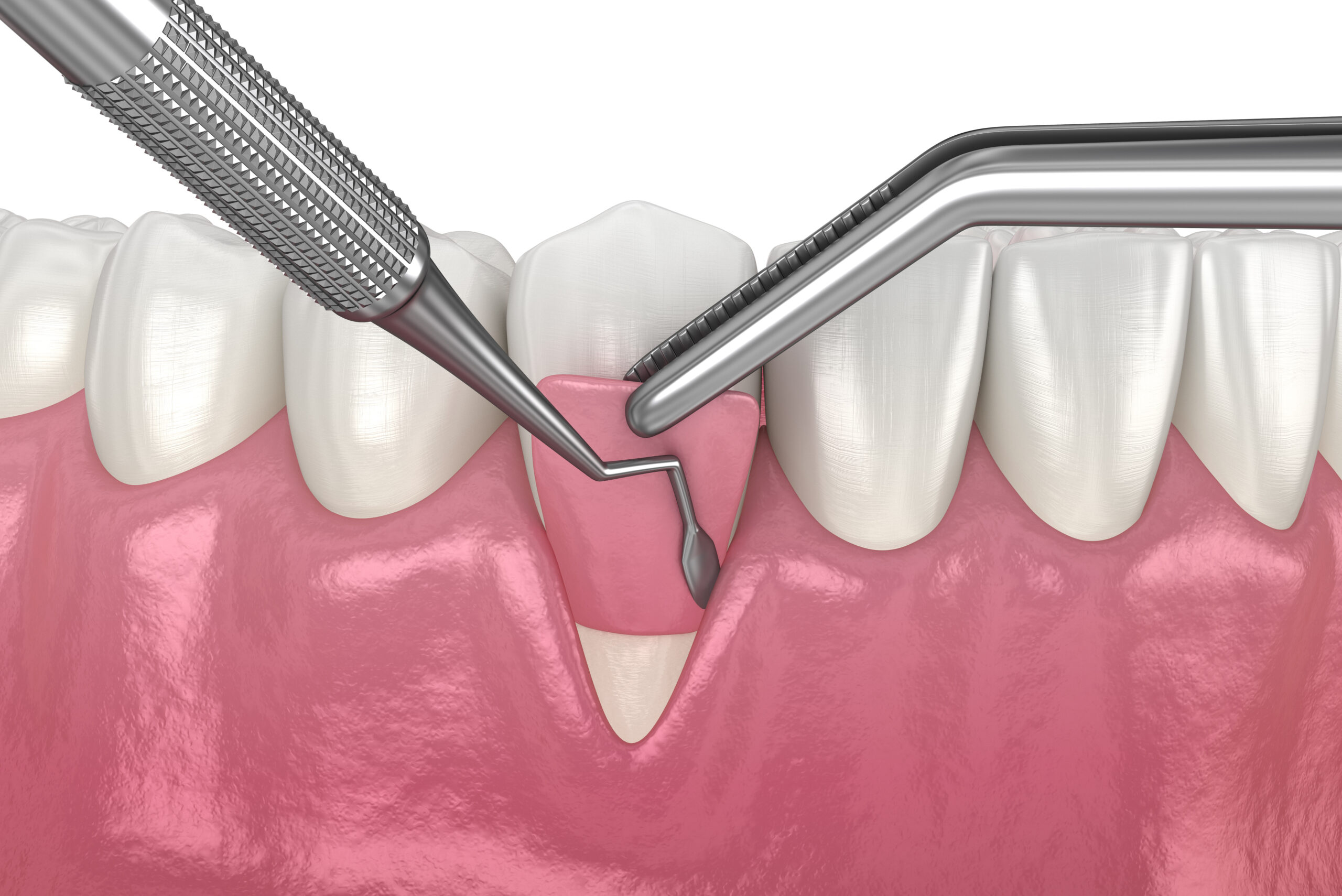Gum recession can occur for a variety of reasons, such as disease, trauma, poor eating habits, and aging. By grafting healthy gum to receding areas, gum grafting provides a remedy. There are a few widespread myths regarding gum graft surgeries and the number of teeth required. Receding gums can affect people with tooth implants and dentures, although they are more noticeable when you have all of your natural teeth.
Our dentist in Naples works with families all around the city and offers a variety of procedures, including gum grafting. Reach out for more information.
How do gum grafts function?
A gum transplant or gum graft is a type of oral surgery. It treats gum recession, a condition in which the gums pull away from the teeth and expose the roots underneath. Your risk of oral decay, sensitivity, and bone loss around teeth increases if your teeth’s roots are exposed. Gum grafting helps the tissue that has been damaged around your teeth, boosting your general oral health. An expert in gums known as a periodontist typically performs gum grafting surgery.
Who requires a gum graft?
If you’re dealing with gum recession, your dentist might recommend gum grafting. Although receding gums are frequently a sign of advanced gum disease, some people are also genetically predisposed to the condition. Gum recession might also happen if you brush too strongly.
How long is the gum graft procedure?
The number of teeth with gum recession varies. It normally takes an hour with bone and gum grafting in Naples if you only require one gum graft. It could take longer if you require many transplants in different oral regions.
Post-operative pain management care
There are certain things you can do to help lessen your discomfort and, more significantly, to lessen the possibility of further difficulties happening, even though waiting is a necessary part of the healing process.
Be sure to keep the following in mind after your procedure:
- Place gauze on the area to help stop the bleeding, being careful not to place it on top of the area but rather to the side.
- For 3–7 days, refrain from heavy activity.
- For 24 hours, avoid using mouthwash or a toothbrush.
- Do not try to see the wound by pulling out your lip.
- Keep your tongue away from the region.
Following a diet of soft foods given by your dentist near you for the first week before gradually returning to harder foods, avoid hot beverages and foods for two to three days. Do not brush your gums near the surgery site for one month. When you do decide to begin brushing that area, be sure to employ gentle brushing motions and a soft-bristled toothbrush.
Are gum grafts worth the trouble?
It is understandable that some people are apprehensive about having a gum graft treatment done, given the potential discomfort involved and the length of the recovery period. It’s vital to keep in mind that even though you will feel some soreness after undergoing this treatment, this sensation will be modest and only lasts for a short while.
Book your appointment with Naples Dental
With the use of modern methods and materials, our dentist at Naples Dental Arts Centrecan now treat gum recession with hardly any discomfort. However, the effects on your smile and general dental health will endure much longer. Avoiding this surgery could make your teeth more sensitive and increase your risk of developing periodontal disease, which could necessitate a more invasive procedure.
Talk to our dentist or periodontist if you have questions or concerns about any aspect of the treatment. We are here for you.

